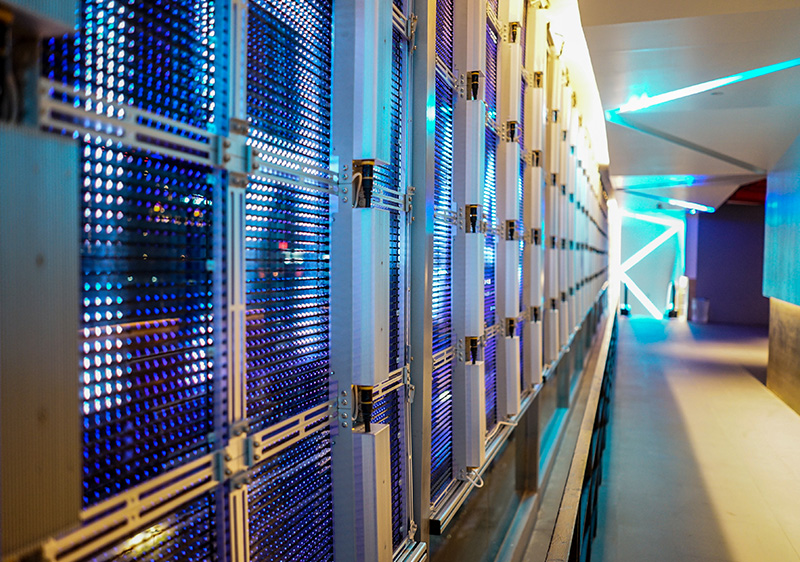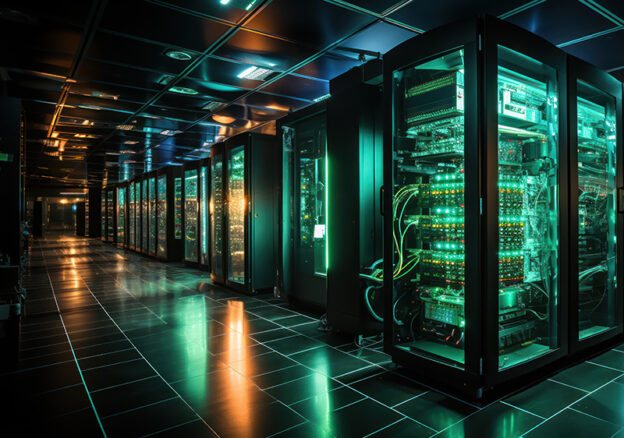Ireland and the Data Centers

Ireland is recognized as a global leader in data hosting and services. We now have more than 80 data centres of various sizes across the country, making us the leading hosts of data centres in Europe. These facilities have been the subject of controversy as their critics say they consume vast amounts of energy and are responsible for an increase carbon emission. It is estimated that if Ireland maintains the level of growth in data centers, some 70% of the country’s electricity will be used to power them. Data center owner refute these assertions and point to a clean industry and job creation. These storage buildings are also critical to the online life that we have come to expect. Inside their walls stand rows and rows of networked servers, and inside those servers, terabytes of data area buzzing gently.
What is a data centre?
A data centre is a building, a collection of buildings or a location where computers and their related hardware equipment are stored. But more than that, they hold the computing infrastructure that IT systems need to function. Here is where servers, data storage drives, and network equipment alongside a company’s digital data are held securely. They are generally owned by private companies. They are physical incarnations of the cloud. Low lit and generally built in industrial zones, they are rather soulless boring looking buildings.

Why is Ireland Europe Data Centre Capital
Irelands cool temperate climate is the main attraction for data centres. The servers are prone to heating up, so it’s critical for them to be built in a geographic location that has a cooler, consistent temperatures. Ireland has also been broadly welcoming to data centres and all the larger tech companies like Big Tech, Amazon, Google etc have facilities here.
Data Centres and the Environment
Irelands latest data centre will be built in Ennis Co Clare as An Bord Pleanala have given planning permission for a campus with six data halls covering 145 acres or 1.3 million sq. ft. The owners, Art Data Centres Ltd, say that the project will create between 400- 450 permanent jobs when the data centre is fully operational with up to 1,200 jobs in construction in the meantime. The planning application was opposed by local environmental groups and by An Taisce (Irelands Watchdog Organisation), who recommended a refusal to the project, citing that it “would require a very significant amount of power, thereby generating a projected 657,000 tonnes of CO2 per annum”. And they contended that this substantial increase in annual emissions contravenes the emissions reduction obligations of the Climate Change Act.”
This is the crux of the matter in Ireland. For the most part, the centres rely on fossil fuels to maintain and to cool the stored data. This increased building of data centres across the country has sparked the worry that, in a worst-case scenario, they could cause rolling blackouts and heavy grid constraints in areas like Dublin. In hot weather, the energy consumption of the new Ennis plant will be 200megawatt, which environmentalists say is the equivalent to the usage of 210,000 homes and they claim that it would use one million litres of water a day, or half the water that Ennis would normally consume. Never the less, the planning application was approved, and the centre will go ahead.

There are claims that the industry is being unfairly scapegoated. Industry experts, like Maurice Mortell, a former executive with data centre companies like Telecity and Data Electronics, points to massive frustration in the industry as they feel they were enticed to Ireland with no indication that energy consumption would be an issue.
Now, there is a moratorium on the opening of new centre in the greater Dublin area where most facilities are situated and those already open, may have to meet stringent conditions to reduce energy usage. Applications for centres outside the capital city are still being granted.
Alternatives to Fossil Fuels
Gas powered generation is reasonable alternative and with over ten centres already pursuing this option, there may be a solution to the energy guzzling and the reputation of energy guzzling. IN other countries Google has had a policy of using renewable energy to power new data centres and that may well be the answer here too.
Blacknight, in Co Carlow are an Irish company who own and maintain their own data centre. They are signatures to the Climate Neutral Data Centre Pact, a confederation of data centre owners who pledge to be carbon neutral in 2030 and they have installed solar panels. ‘There’s a myth going around that water cooling is using up our water supplies in Ireland, but this is also not true. None of the data centres we use have water cooling. While some data centres in Ireland might use water cooling it’s not the norm by any means. A closed loop system is used in some, but that uses a fixed amount of liquid which is constantly reused; it’s not being wasted down the drain. The narrative in the media is that data centres are the same, they are not. For example, Blacknight’s chillers are used, on average, about 1 week a year on the very hottest days of summer, otherwise, they’re free-air cooled thanks to Ireland’s temperate climate’.
The Future planning for Data Centres
A further solution to the heavy toll on Irelands power grid, would be the simple clearing of the data stored. Just as we are all encouraged to tidy up files on the computer, we need to scrutinise the data which is being kept as this may well need a tidy up too. Infinite data retention is obviously not sustainable.
The energy use of data centres is the main bug bear to their advancement particularly as Ireland already is on course to fall short of its 2023 Climate Targets. ‘Unless Ireland figures out a way to surge forward with its slow development of renewables, these datacentres seem impossible to sustain’ Writes Jessica Traynor in a recent Guardian article. ‘As world temperatures increase, datacentres have migrated to places where the climate is temperate. There, they consume vast amounts of energy, increasing carbon emissions. It’s a frightening and seemingly unsustainable pattern; we’ve entrusted our memories to a system that might destroy them, and us.
Data centres are needed, and many argue that they make a positive contribution to the country. The questions we are left with is whether data centres can find alternative power sources and sustainable solution to the limitations of the Irish power grid. The alternative will be losing this investment to other countries. It remains to be seen.


 Make your business stand out! A quick guide to mastering social media for your business.
Make your business stand out! A quick guide to mastering social media for your business. A quick guide to cropping and resizing your website’s images using built-in system tools.
A quick guide to cropping and resizing your website’s images using built-in system tools. Quick and easy steps to improving the SEO on your website.
Quick and easy steps to improving the SEO on your website.